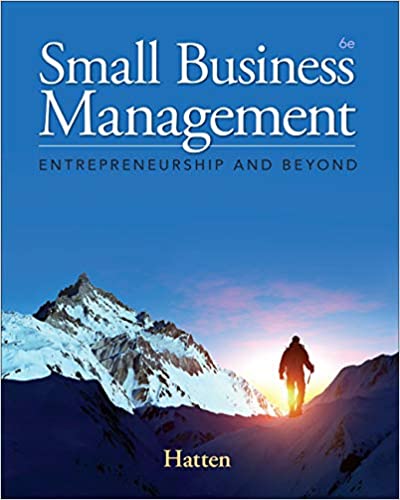
Small Business Management 6th Edition by Timothy Hatten
Edition 6ISBN: 978-1285866383
Small Business Management 6th Edition by Timothy Hatten
Edition 6ISBN: 978-1285866383 Exercise 9
The stories of companies like KFC, Coca-Cola, and McDonald's guarding their recipes for batter, syrup, and hamburger sauce are legendary. Triple-locked safes, binding contractual agreements, spies, and counterspies are all involved. A company's trade secrets are worth significant (sometimes staggering) amounts of money. Like any good secret, they are known to only a handful of people.
Many assets, such as chemical formulas or specific designs, are protected by patents. In exchange for the legal protection afforded by a patent, the patent holder must surrender the leverage of secrecy. That's because part of the patent application process involves a full explanation of the process or product. The PTO publishes all patent applications within 18 months of their filing. Protecting a trade secret is complicated by the fact that, unlike patents, copyrights, and trademarks, trade secrets do not fall under federal jurisdiction. They are regulated by individual state laws. Trade secrets must be proved to be secret to qualify for protection. At the very minimum, the owner must prove that procedures were in place to protect the information prior to any legal challenge.
Imagine that you have developed a unique formula for a soft drink that, upon entering a person's mouth, analyzes the drinker's DNA to determine his favorite flavor, and then the drink instantly realigns its chemical composition to become that flavor. Write a two-page paper describing how you can best protect this trade secret. Will you patent it? Why or why not?
Many assets, such as chemical formulas or specific designs, are protected by patents. In exchange for the legal protection afforded by a patent, the patent holder must surrender the leverage of secrecy. That's because part of the patent application process involves a full explanation of the process or product. The PTO publishes all patent applications within 18 months of their filing. Protecting a trade secret is complicated by the fact that, unlike patents, copyrights, and trademarks, trade secrets do not fall under federal jurisdiction. They are regulated by individual state laws. Trade secrets must be proved to be secret to qualify for protection. At the very minimum, the owner must prove that procedures were in place to protect the information prior to any legal challenge.
Imagine that you have developed a unique formula for a soft drink that, upon entering a person's mouth, analyzes the drinker's DNA to determine his favorite flavor, and then the drink instantly realigns its chemical composition to become that flavor. Write a two-page paper describing how you can best protect this trade secret. Will you patent it? Why or why not?
Explanation

This question doesn’t have an expert verified answer yet, let Examlex AI Copilot help.
Small Business Management 6th Edition by Timothy Hatten
Why don’t you like this exercise?
Other Minimum 8 character and maximum 255 character
Character 255


